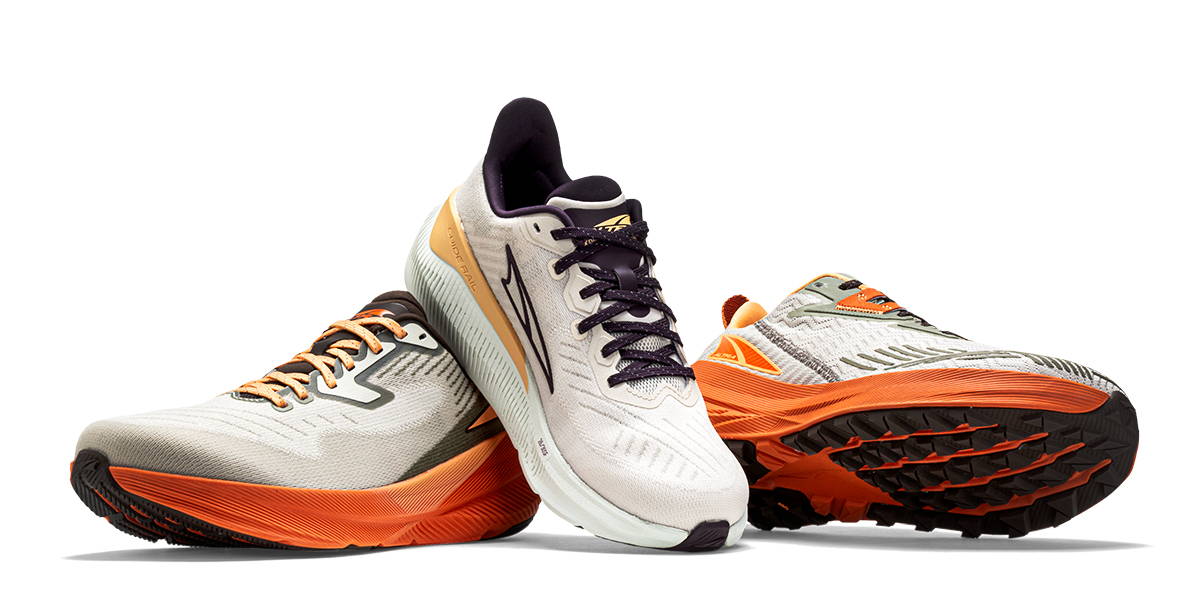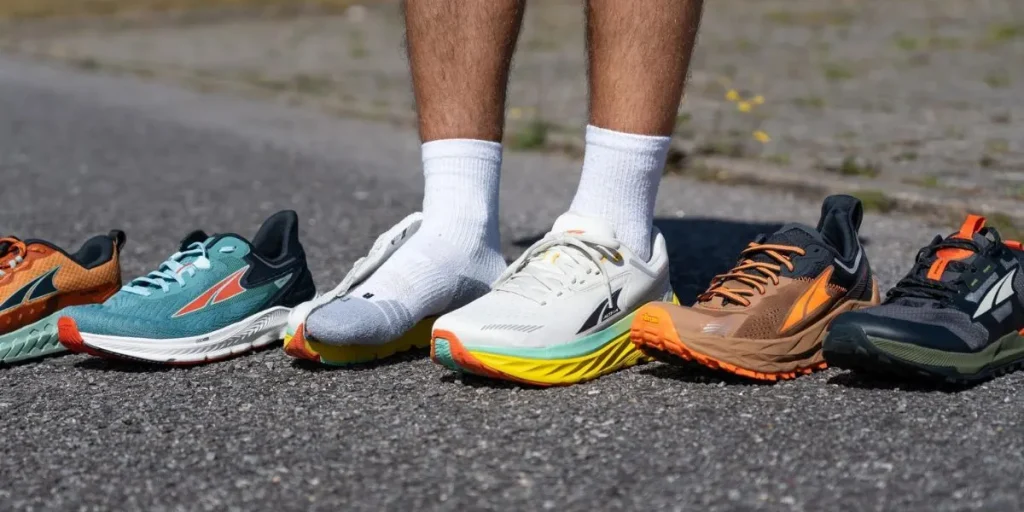Blog
“How to Choose the Best Running Shoes for Your Feet”
Choosing the right pair of running shoes is essential for both comfort and performance. Wearing the wrong shoes can lead to discomfort, blisters, and even long-term injuries. With countless options available in the market, selecting the best running shoes for your feet may seem overwhelming. However, by understanding your foot type, gait, and running needs, you can make an informed decision that enhances your running experience. This guide will help you navigate the process and find the perfect pair of running shoes for your feet.
1. Understand Your Foot Type
The first step in choosing the best running shoes is to determine your foot type. Your foot type will influence the level of arch support you need and the kind of shoe that works best for your running style. There are three main foot types: flat feet, neutral feet, and high arches.
How to Determine Your Foot Type:
- Flat Feet: If your arch is low or almost nonexistent, you likely have flat feet. This means you may overpronate, or your foot rolls inward excessively when you run.
- Neutral Feet: If your arch is neither too high nor too low, and your foot maintains a neutral position when you run, you have a neutral foot type.
- High Arches: If you have a high arch, your foot tends to roll outward (supinate) when running, putting more pressure on the outer edge of your foot.
Why Foot Type Matters:
- Flat Feet: Look for stability shoes with arch support and motion control features to help reduce overpronation.
- Neutral Feet: Cushioning shoes that offer balanced support and comfort will work best.
- High Arches: Choose shoes with extra cushioning to absorb shock and provide support for the outer foot.
2. Determine Your Running Gait
Your running gait plays a crucial role in determining the type of shoe you need. Gait analysis looks at how your foot strikes the ground when you run. There are three main types of gait: overpronation, neutral pronation, and supination.

Gait Types:
- Overpronation: The foot rolls inward too much when landing. This is common for people with flat feet and requires shoes with more stability or motion control features.
- Neutral Pronation: The foot lands with a balanced motion, rolling slightly inward. Runners with a neutral gait can opt for neutral cushioned shoes.
- Supination (Underpronation): The foot rolls outward, often associated with high arches. Cushioning shoes with good shock absorption are ideal for this type.
How to Check Your Gait:
- Wet Test: Wet your feet and step on a surface where your foot print will be visible (e.g., a piece of cardboard or a paper towel). The amount of arch visible in the print can help determine your foot type and gait.
- Gait Analysis: Many running stores offer gait analysis, where they observe your stride while you run on a treadmill and recommend shoes based on your gait.
3. Consider Your Running Surface
The type of terrain you run on significantly impacts the kind of shoe you should choose. Whether you run on roads, trails, or a treadmill, each surface requires different features in a running shoe.
Types of Running Surfaces:
- Road Running: Road running shoes are designed for smooth, hard surfaces. They tend to be lightweight and highly cushioned to provide comfort over long distances.
- Trail Running: Trail running shoes are built for uneven terrain, providing more durability, stability, and traction. These shoes typically have a more rugged sole to handle rocks, roots, and mud.
- Treadmill Running: Treadmill running shoes are similar to road running shoes but often slightly more flexible and breathable, as the surface is consistent and less impact-heavy.
Why It Matters:
- Road Running Shoes: Look for shoes with lightweight cushioning, good arch support, and a smooth sole.
- Trail Running Shoes: Choose shoes with stronger tread for better grip and additional support to handle rough terrains.
- Treadmill Running Shoes: Flexibility and breathability are key, so go for shoes that are comfortable for shorter distances and provide plenty of cushioning.
4. Choose the Right Fit
A proper fit is critical to ensuring that your shoes provide the support you need while avoiding discomfort or injury. Ill-fitting shoes can cause blisters, calluses, and even long-term issues like shin splints or stress fractures.
Key Fitting Tips:
- Proper Toe Box: Ensure there’s enough space in the toe box for your toes to move freely. A good rule of thumb is to leave about a thumb’s width of space between your longest toe and the front of the shoe.
- Heel Fit: Your heel should feel secure in the shoe without slipping. If there’s too much movement, you may develop blisters or heel pain.
- Width: If you have a wider or narrower foot than standard sizing, many brands offer shoes in different widths. Be sure to choose a shoe that accommodates the width of your foot without feeling too tight or too loose.
- Try on Shoes in the Evening: Feet tend to swell throughout the day, so trying on shoes in the evening will give you a better sense of how they will feel during your run.
Why Fit Matters:
- Comfort: Proper fit ensures that your shoes are comfortable from the first wear, helping you avoid blisters and hotspots.
- Performance: A snug fit ensures your foot doesn’t move too much inside the shoe, allowing you to run more efficiently and comfortably.
- Injury Prevention: A shoe that fits correctly helps maintain good running form, reducing the risk of overuse injuries.
5. Think About Your Running Distance
The type of shoe you need can also depend on how far you plan to run. Whether you’re training for a marathon or going on a casual jog, different distances require different shoe features.

Short-Distance Runners (5K to 10K):
- Focus: Light, responsive shoes with a balance of cushioning and support.
- Features: Look for shoes that are lightweight and breathable, providing comfort without sacrificing speed.
Long-Distance Runners (Half-Marathons and Marathons):
- Focus: Maximum cushioning and comfort for prolonged wear.
- Features: Look for shoes with extra cushioning, durability, and support to handle the repetitive pounding from long-distance runs.
Why It Matters:
- Comfort for Long Runs: Long-distance running puts more strain on your feet, so shoes with ample cushioning help prevent fatigue and discomfort over time.
- Speed for Short Runs: For shorter races or sprints, lighter shoes with less cushioning can help improve speed and agility.
6. Budget Considerations
While investing in a high-quality pair of running shoes is essential, it’s important to balance quality with budget. Running shoes can range in price from $50 to $200 or more, but you don’t necessarily need to break the bank for a great pair.
Price vs. Features:
- Budget Options: Shoes in the lower price range ($50–$100) may lack some of the advanced features of premium models, but they can still provide adequate cushioning and support for casual runners.
- Premium Shoes: Higher-end shoes ($100–$200) often offer advanced features such as superior cushioning, enhanced durability, and motion control, making them a great choice for dedicated runners or those who run frequently.
Why It Matters:
- Balance Quality and Cost: You don’t need to spend excessively, but investing in a good pair of shoes tailored to your foot type, gait, and running needs will pay off in the long term.
- Longevity: Spending a bit more on durable shoes means you’ll replace them less often, saving money over time.
7. Test Shoes Before You Buy
Finally, it’s always best to test shoes before purchasing. Many running stores offer free fitting services and allow you to test shoes on a treadmill or in-store to ensure the right fit.
Why It’s Important:
- Comfort Test: Testing the shoes gives you a real sense of how they’ll feel when running.
- Return Policies: Many stores have a return or exchange policy that allows you to try out the shoes on a real run. Take advantage of this policy to ensure the shoes meet your needs.
Conclusion
Choosing the best running shoes for your feet involves understanding your foot type, running gait, and specific needs based on your running goals. A well-chosen pair of shoes will improve comfort, enhance performance, and prevent injuries. By following these tips and testing shoes before buying, you’ll find the perfect running shoes that fit like a glove and support you every step of the way. Whether you’re a beginner or an experienced runner, investing in the right footwear is the first step toward achieving your fitness goals.


